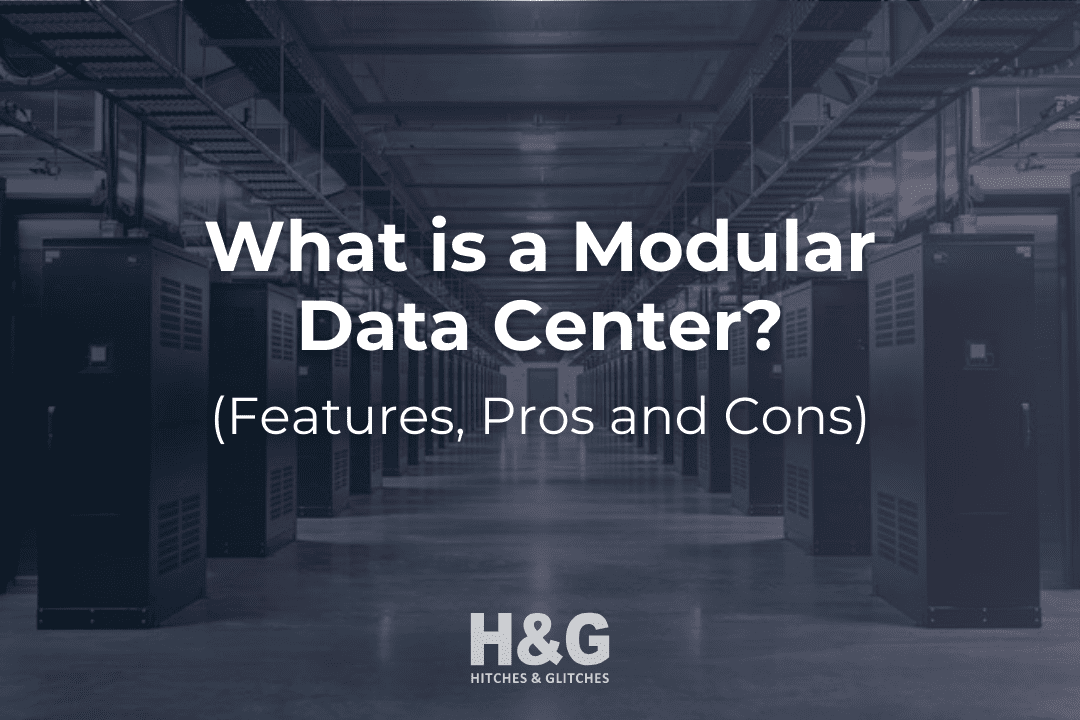
Did you hear about the Data Center? I mean, a Modular Data Center?
If No, then this blog is for you.
In today’s tech-driven world, data is incredibly important for businesses. Organizations need a smart way to manage their IT equipment to keep up. That’s where modular data centers come in. They’re a modern, flexible, and efficient solution that is changing the game in IT infrastructure management.
What’s so great about modular data centers? They allow for quick setup, are adaptable to changing needs, and are cost-effective—no wonder more and more businesses are turning to them to stay ahead in the fast-moving digital world.
In this article, we’ll look at modular data centers. We’ll explore what they are, their advantages and disadvantages, and how they transform how we handle data in the modern age.
What is a Modular Data Center?
A Modular Data Center is a smart and flexible way to create and manage a place for important computer stuff. Unlike regular computer buildings that stay in one place, Modular Data Centers are made of separate pieces that we can adjust, move, and make bigger or smaller.
We put things like computers, machines to keep them cool, electricity, and security inside these pieces. What’s special about these Modular Data Centers is that we can easily change and move them around.
These data centers help businesses save money and energy because they cleverly use power and cooling. They also work well with other machines and protect our important computer data.
So, Modular Data Centers are like smart, movable buildings for our computer stuff. They help us save money, use energy wisely, and always be ready for whatever the digital world throws.
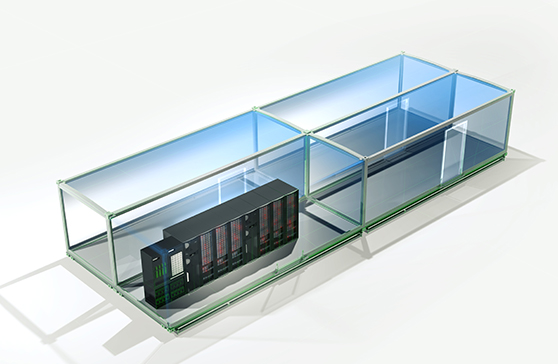
Image Source: eltek.com
What are the Types of Modular Data Centers?
Modular Data Centers aren’t one-size-fits-all. They come in many types and setups, each designed to fit different business needs. In this section, we’ll look at the various kinds of Modular Data Centers, how you can customize them, and how they can change and grow with your business.
1. Containerized Modular Data Centers:
- ISO Containers: These are just regular shipping containers that hold the whole data center. You can easily move them to different places.
- Micro Data Centers are like smaller versions of containerized data centers, great for fast computing closer to where the data is made. It’s perfect for things like the Internet of Things (IoT).
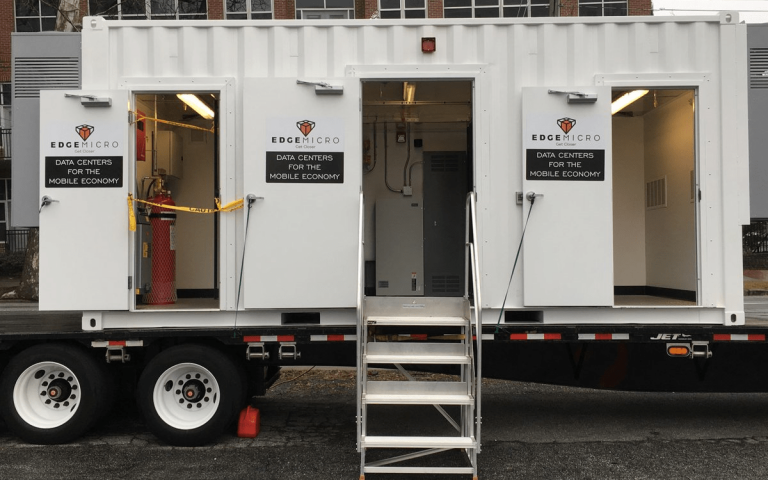
2. Skid-Based Modular Data Centers: These data centers sit on skids so that you can put them outside or inside. They’re versatile and can be changed to match what you need.
3. Rack-Based Modular Data Centers: You can add or remove individual server racks to make the data center bigger or smaller. They let you change the size; you can use them with other types of Modular Data Centers.
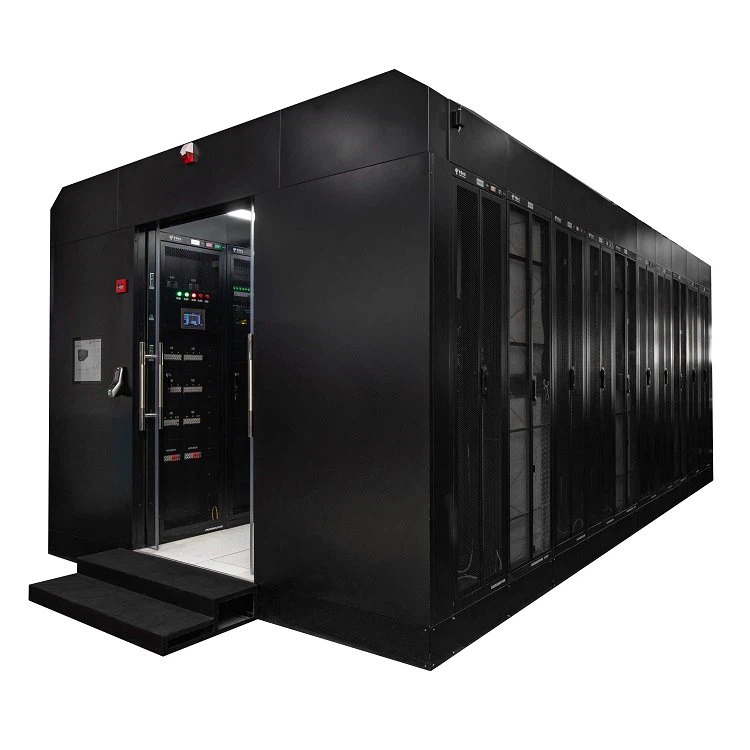
4. Enclosed Data Center Pods are like little data centers inside buildings. They’re safe and have the right temperature for data center stuff.
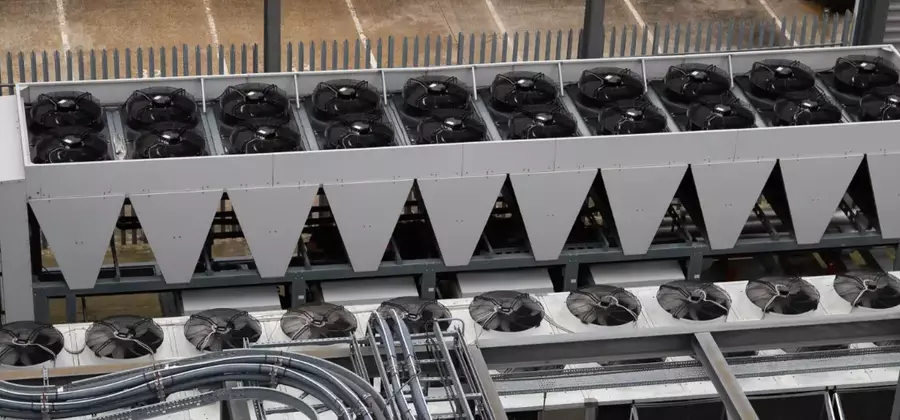
5. Open Compute Project (OCP) Data Centers: These data centers follow the Open Compute Project (OCP) rules, which are all about using open-source tech and saving energy. They’re super customizable and great for businesses that want to save money and power.
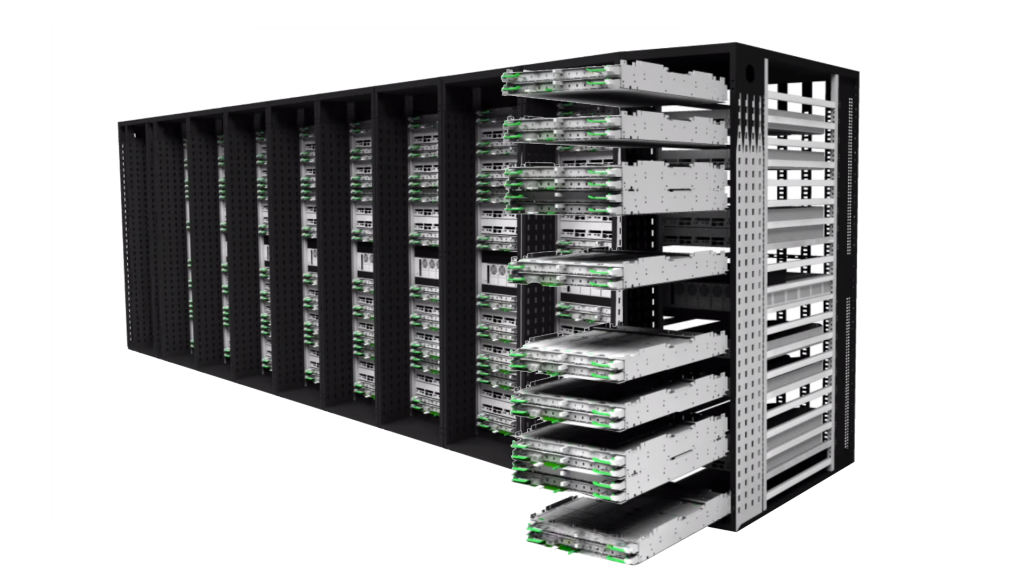
6. High-Density Modular Data Centers: These data centers are made to hold lots of servers and storage equipment. They’re good for businesses that need a lot of computing power.
7. Data Center-in-a-Box: These are small, all-in-one data centers you can take to different places. They’re really useful for emergencies or when you need a data center for a short time.
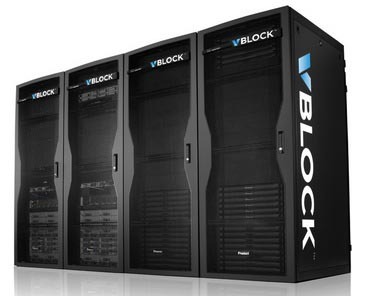
8. Custom Modular Data Centers: Some businesses want completely custom Modular Data Centers made just for them. They’re super flexible and work for unique needs.
9. Edge Data Centers: These data centers are near where people use the Internet. This makes things work faster, especially for stuff that needs to happen in real time.
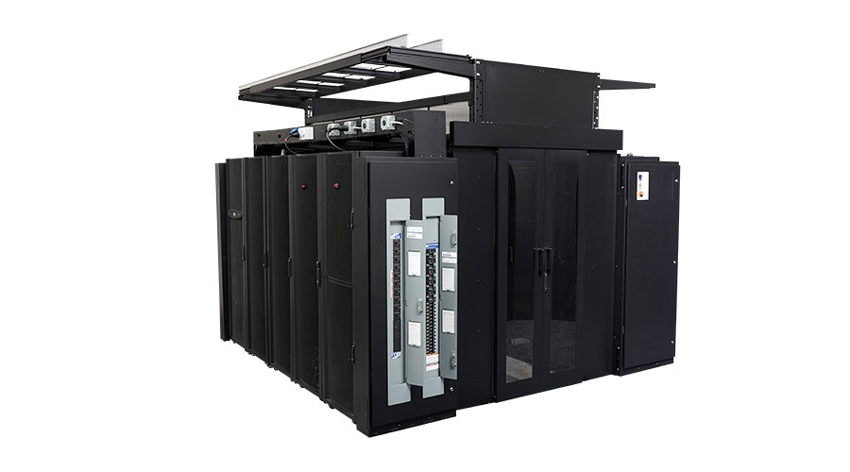
10. Green Modular Data Centers: Green Modular Data Centers are all about being good for the environment. They use renewable energy and tech to save power and be eco-friendly.
You can choose the right one for your business with all these types. They can be customized, work perfectly for your needs, and grow and change with your business.
Real-World Examples of Modular Data Centers
To truly understand how amazing Modular Data Centers can be, let’s look at real-life cases that show how they can adapt, innovate, and change things in different industries.
- Microsoft’s Project Natick: Microsoft did something incredible. They put a data center module near Scotland’s Orkney Islands under the sea. It was a cool experiment to see if it could save energy and keep things cool without using lots of power. And guess what? It worked! The underwater datacenter ran well, and the seawater naturally kept cool. This shows how Modular Data Centers can work in really unusual places.
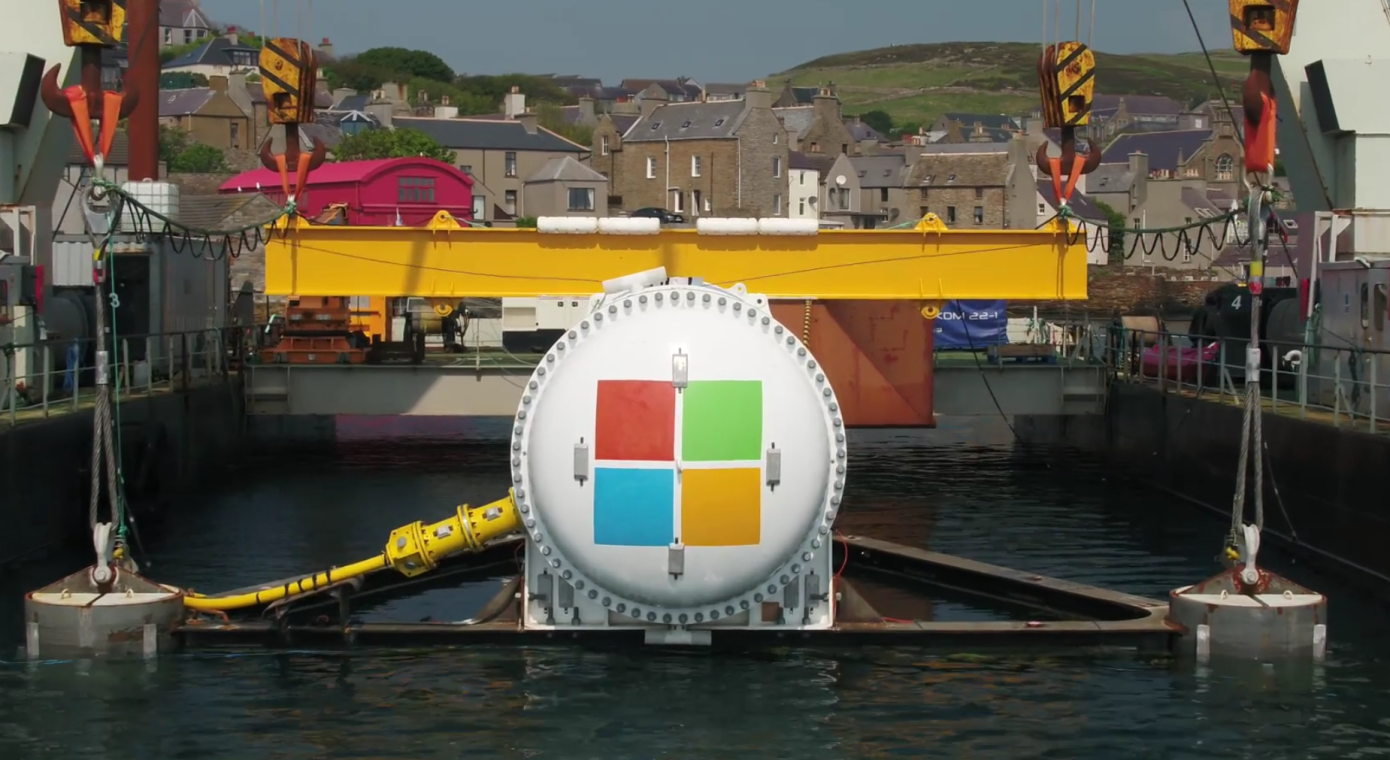
Microsoft puts data centers at the bottom of the ocean | Source: techcrunch.com
- Facebook’s Arctic Data Center: Facebook wanted to be eco-friendly, so they built a Modular Data Center in super-cold Luleå, Sweden. They used different modules designed to handle the crazy cold weather. This shows you can customize Modular Data Centers to fit specific places, even if they’re super chilly.
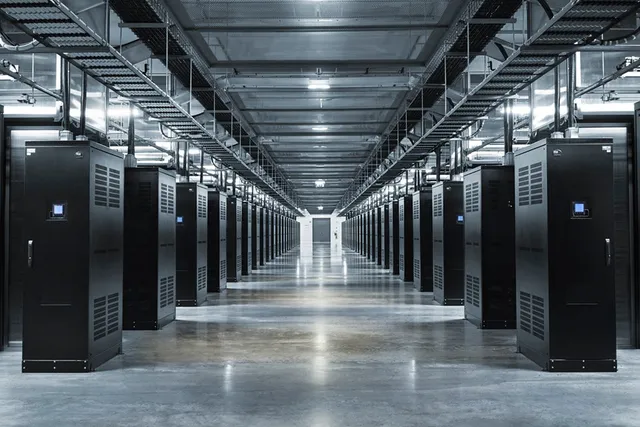
Mark Zuckerberg shared a picture from Facebook’s cold, cold data center | Image Source: theverge.com - EdgeConneX Micro Data Centers: EdgeConneX made tiny data centers for edge computing. These are placed closer to where people use the Internet, so things load faster. These are great examples of how Modular Data Centers can meet the special needs of edge computing, making data closer to where it’s needed.
- IBM’s Portable Modular Data Center: IBM has these data centers that can be easily moved to faraway places, like areas hit by disasters or where there’s not much tech stuff. This shows how Modular Data Centers can quickly go where regular data centers can’t.
- Healthcare Loves Modular Data Centers: Even hospitals are using Modular Data Centers. For example, the University of Pittsburgh Medical Center (UPMC) used them for serious medical work. These data centers have the power needed for important medical stuff and research. It proves that Modular Data Centers can meet the demands of the healthcare world.
All these examples show that Modular Data Centers are not just fancy words. Big tech companies, clever data center providers, and important fields like healthcare are using them. They’re not just a trend but a game-changer that suits all industries. These data centers are super flexible, they save money, and they help businesses all over the world be better and faster.
Advantages and Disadvantages of Modular Data Center
Modular Data Centers are great, but they also have their pros and cons. Let’s break them down:
Advantages
- Scalability and Flexibility: These data centers are built to grow or shrink as needed. You can add or remove parts easily to match what your business wants. This is super handy in the fast-changing digital world.
- Cost Savings: They save money. Building them is easier, and they use energy wisely. Plus, you don’t need to spend a lot of money upfront like you do with regular data centers. You can pay as you go.
- Energy Efficiency: They’re built to save energy. The cooling and power stuff is set up just right, so there’s not much waste. They even use smart cooling like hot/cold aisle containment to work better.
- Quick Setup and Less Downtime: Setting up these data centers is fast, so you don’t have to wait long to use them. This means less waiting and fewer breaks when you need to make them bigger or do maintenance. Your work doesn’t stop.
Disadvantages
- Higher Initial Costs: Up and running Modular Data Centers can cost more initially than regular data centers. Making and delivering the special parts can be expensive.
- Security Worries: Security is a big deal, especially when you have important data. These data centers can be moved so that they have different security challenges. It would be best to have strong access control and surveillance to keep things safe.
- Customization Can Be Tricky: Even though you can customize them, it can be challenging. You need to plan everything carefully and get it right for your needs. This can take time and needs experts to do it well.
Modular Data Centers are pretty cool for many reasons. Still, they also have some things to think about before you decide to use them. They’re flexible, save money, and are efficient. Still, they can cost more initially, have security challenges, and need careful planning. It’s all about finding the right fit for your business.
Modular Data Center Price
Knowing the cost of Modular Data Centers is super important because it affects how a business decides what to do. In this section, we’ll look at what makes Modular Data Centers cost money, compare those costs to regular data centers, and see how to save some cash.
Factors that make Modular Data Centers Cost Money
- Design and Customization: The more you want to customize, the more it can cost. If you need special parts and designs, it might be pricier. But it’s worth it because you get exactly what you want.
- Size and Scalability: How big and flexible you want your Modular Data Center to be matters. If you need it to be large or very flexible, you might need more parts, equipment, and things like that, making it cost more.
- Energy Efficiency: Modular Data Centers save energy, but getting all the special cooling and power stuff set up can initially cost more. However, in the long run, it saves you money.
- Security: It can add to the cost if you want strong security, like fingerprint access and fancy surveillance systems. But if you need top-notch security, it’s worth spending more.
Comparing Costs with Regular Data Centers
- Getting Started: Modular Data Centers can cost more upfront than regular ones. Regular ones take longer to build, so you can spread out the money you spend. But over time, Modular Data Centers can be cheaper because they save energy and can grow with your needs.
- Daily Costs: Regular data centers have ongoing expenses, like big energy bills and updates. Modular Data Centers are designed to save energy and cost less to run over time.
Ways to Spend Smart:
- Use Standard Stuff: Pick standard parts you can easily buy without much change. It saves money.
- Get Good Cooling and Power: Invest in smart cooling and power setups. They save energy and money in the long run.
- Plan to Grow: Consider how big you need to be. It helps you expand your data center without spending too much.
- Save Energy: Use energy-saving ideas and tech to spend less in the long run.
So, understanding the cost of Modular Data Centers is a big deal. It depends on what you want, but they can be a money-saver in the long run because they’re efficient and can grow with your business. Just be smart about your spending, and you’ll be in good shape.
Further Reading: How Much does it Cost to Maintain a Data Center?
Modular Data Center vs. Traditional
Deciding between Modular Data Centers and traditional data centers is a big deal. It affects how a business works, how much it spends, and how it can grow. In this section, we’ll compare both options, see what makes them different, figure out when to pick one over the other and talk about new ideas in data center design.
Comparison:
- Flexibility and Growth: Modular Data Centers are all about being flexible and growing. You can easily change them by adding or removing parts. Regular data centers might need big changes and construction to do the same, which could be more flexible.
- Quick Start: Modular Data Centers are known for starting up fast. They can be up and running in just days or weeks. Regular data centers take much longer to build and set up.
- Saving Money: While Modular Data Centers might cost more initially, they often become cheaper in the long run. They’re energy-efficient and don’t need as much money for everyday running. Regular data centers can need a lot of money upfront and ongoing costs.
- Moving Around: Modular Data Centers are designed to be moved. You can put them in different places. Regular data centers stay in one spot.
- Special Design: Modular Data Centers can be made to fit special needs. Regular data centers can only be changed if they need big construction work.
So, choosing between Modular Data Centers and regular ones is a big deal. Think about how quickly you need to grow, how much space you have, and if you want to save money. It all depends on your business’s unique needs.
Future of Modular Data Centers
As we step into the future of managing data, Modular Data Centers are taking center stage in reshaping the world of IT infrastructure. In this final section, we’ll explore the emerging technologies and trends that paint the future of Modular Data Centers and how businesses can gear up for the evolving data center landscape.
1. Edge Computing Integration:
- Enhanced Edge Solutions: With the Internet of Things (IoT) surge and the need for super-fast data processing, Modular Data Centers are moving closer to where people use the Internet. This shift stays here, making data processing faster, reducing delays, and giving users better experiences.
- 5G-Powered Edge Data Centers: The rollout of 5G networks makes edge data centers more important. These data centers will use the speed and low lag of 5G to support cool stuff like self-driving cars, augmented reality, and smart cities.
2. Sustainable and Eco-Friendly Solutions:
- Renewable Energy Integration: With the world focusing on being more eco-friendly, Modular Data Centers are using green energy sources like solar and wind power to reduce their environmental impact.
- Energy-Efficient Cooling: They also use better cooling tech and airflow systems to save even more energy.
3. Enhanced Security Measures:
- Biometric Access Control: To stay safe in a world where cybersecurity is a big deal, Modular Data Centers are using advanced fingerprint and face recognition to up their security.
- AI-Powered Security: They also use smart computers to watch data traffic and resolve real-time security problems.
4. Hyperconverged Infrastructure:
- Simplified Management: Modular Data Centers are getting easier to run using hyperconverged infrastructure. This combines all the important stuff like computers, storage, and networks into one simple system.
5. Modular Data Centers as a Service:
- Data Center as a Service (DCaaS): More and more businesses are getting into DCaaS. It’s like renting Modular Data Centers, just like renting cloud computing. This means you can get as much data center power as you need without spending all your money upfront.
6. Enhanced Monitoring and Automation:
- AI-Powered Data Center Management: Smart computers watch and run Modular Data Centers in real time. They’re good at saving power and fixing things before they break.
7. Liquid Cooling Technologies:
- Advanced Cooling Solutions: Liquid cooling is becoming more popular. It’s a great way to stop all the heat made by super-fast computers and equipment.
8. Remote Management and Edge Analytics:
- Edge Analytics: With more edge data centers, businesses need ways to watch and run them afar. This helps them make their data processing work well.
9. The Role of 3D Printing:
- Customization and Rapid Prototyping: 3D printing makes special parts and covers for Modular Data Centers. It’s a fast way to try out new ideas and save time.
So, the future of Modular Data Centers is full of exciting things like super-fast processing, green energy, and top-notch security. It’s all about making data centers work better and smarter, and businesses need to be ready for the coming changes.
Conclusion
The world of data management is going through a major change, and Modular Data Centers are at the forefront of this revolution. With their flexibility, scalability, and adaptability, these data centers provide businesses with the tools they need to succeed in today’s data-driven world and the one that’s coming tomorrow.
We’ve explored the many types and setups of Modular Data Centers, their pros and cons, and their future potential. It’s clear that Modular Data Centers aren’t just a fad; they’re a crucial solution for businesses looking to make the most of their data infrastructure.
By knowing their choices, the good and not-so-good sides, and the new technologies coming up, businesses can get ready to make the most of Modular Data Centers. They are the key to managing data efficiently, being responsive, and staying on top of the challenges of the digital age. In this ever-evolving world of data centers, Modular Data Centers aren’t just a solution; they’re a promise of being flexible, efficient, and staying ahead in a technology world that never stops changing.

